Visited March 8th 2018 Best time to visit March – August http://www.bbowt.org.uk/reserves/Inkpen-Crocus-Field
A foray into Berkshire! Advertised on the BBOWT website as ‘Britain’s largest wild display of spring crocuses’ – well, you’ve just got to go and see it. Preferably on a sunny day when the crocus are opened up and looking their best.

There are 2 pasture fields with millions of them. It’s not the same as a bluebell woodland – there is no mass of colour which can be seen from a distance. Crocuses grow discretely in these fields – you can walk amongst and between them if you really watch your step. It pays to get down to their level – the BBOWT webpage has the best picture:
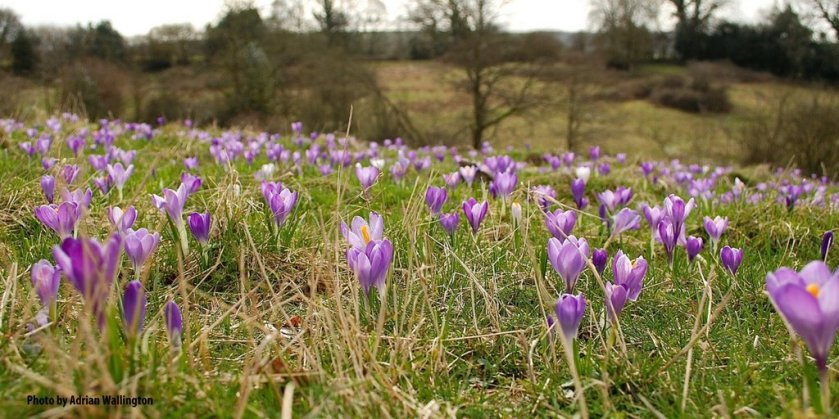
But I took some half-decent close-ups:
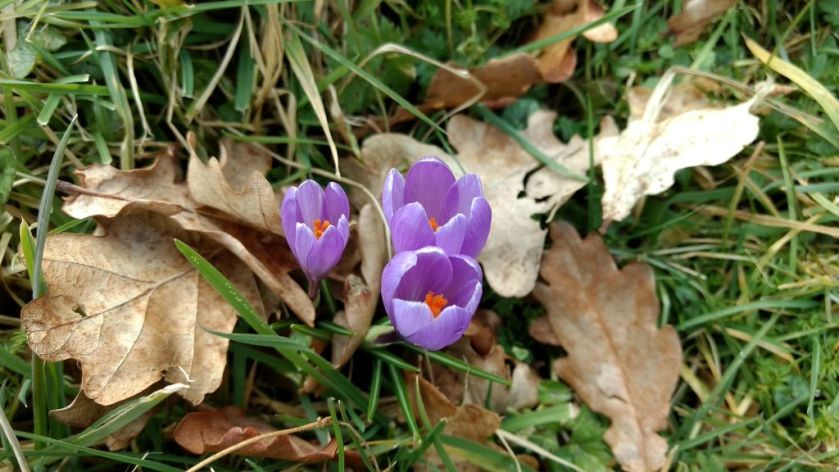
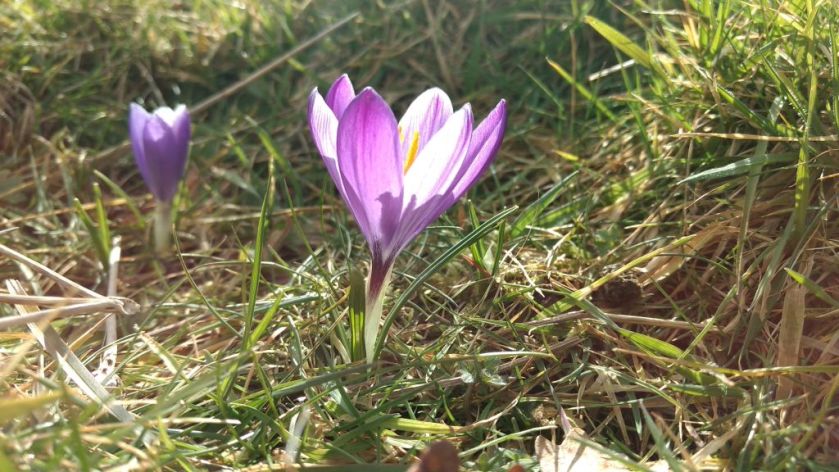
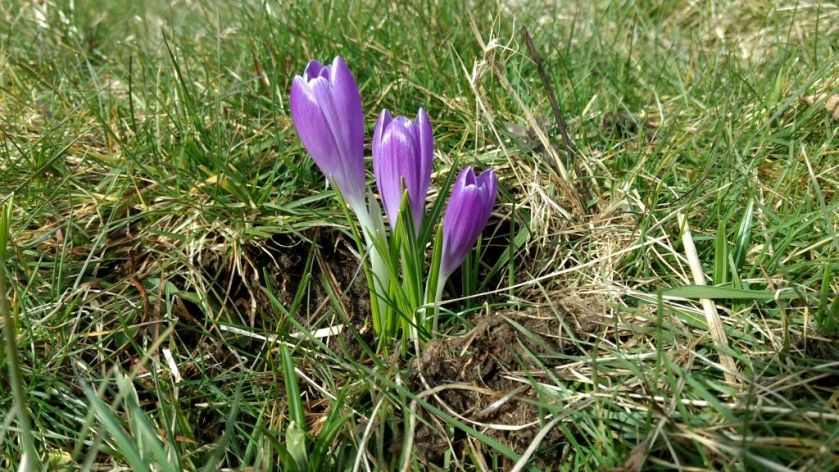
Later on in the Spring and Summer there are wildflowers and butterflies, so a return trip is on the cards.
On a grassy bank surrounded by crocuses I ate my smoked salmon and cucumber sandwiches and worried about their carbon footprint (see New Scientist article below).
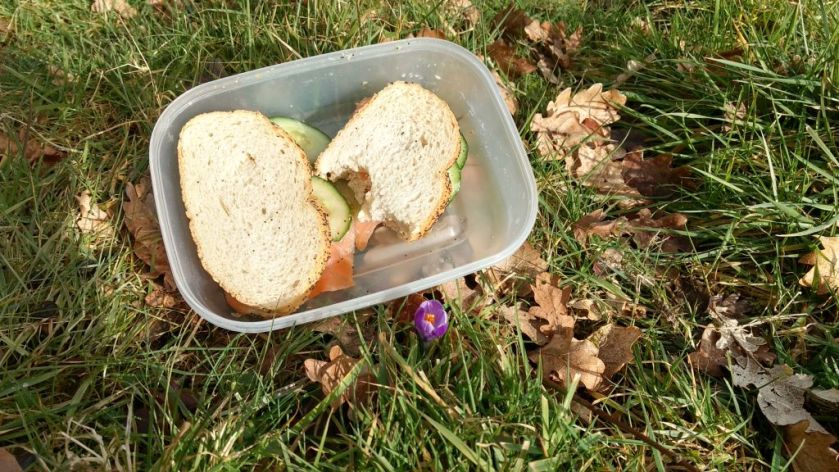
How I got there: I caught a train from Oxford to Newbury – and took my bike with me. There were stations that were closer but it looked a nice bike ride from Newbury – about 7 miles along the canal and a quiet Sustrans route.
For those of you who have never taken a bike on a train, here are a few bits of advice:
At the station, don’t struggle with the stairs, use the lift if there is one. If you do have to use stairs (some smaller stations don’t have lifts), remove your panniers before you try to lift your bike. If you don’t fancy carrying your bike, get some help from station staff. The last thing you want to do is fall down stairs whilst carrying a bike.

There are several different ways of storing your bike depending on what sort of train it is. It pays to ask the station staff what sort of facilities are available, and the best place to stand on the platform. Here’s 2 methods:
The first photo shows my bike hanging by its front wheel off a hook in a special bike compartment – it’s actually quite easy to get it in position using one knee to shove the back wheel from behind. The other shows the only option where there are no facilities. Of course you have to watch out at every station in case the doors open on the side you’ve chosen. And watch out between stations in case your bike falls over.
Sometimes you have to book, and sometimes (like in rush hours on weekdays) you’re not allowed non-folding bikes on trains at all. I always buy my ticket from a human in the ticket office who will give me advice, and try to travel at quiet times. Weekends can be a problem as that’s when most leisure cyclists use the train and there can be too many bikes for the train’s capacity. But often the train staff will use their discretion and allow you on if there’s not too many passengers.
Basically it’s not easy. But it’s worth the hassle to have your bike with you. It was just lovely cycling along the Kennet and Avon canal and Sustrans Route 4….
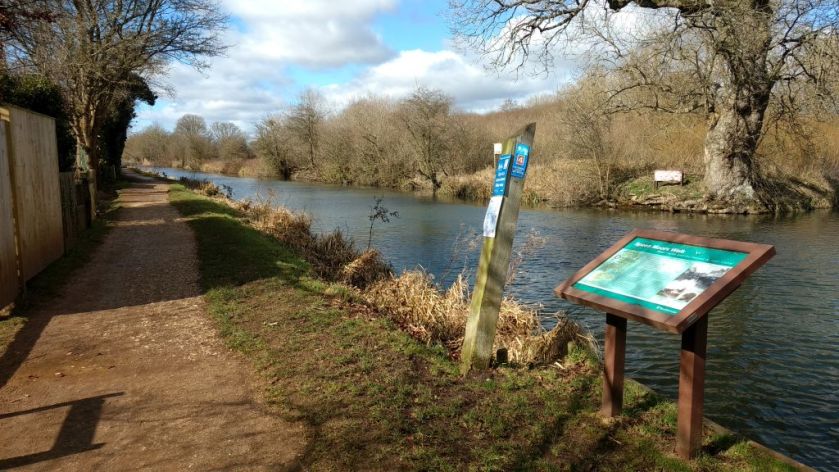
…so much nicer than driving in a car along the A34 . Here’s where it crosses the canal….
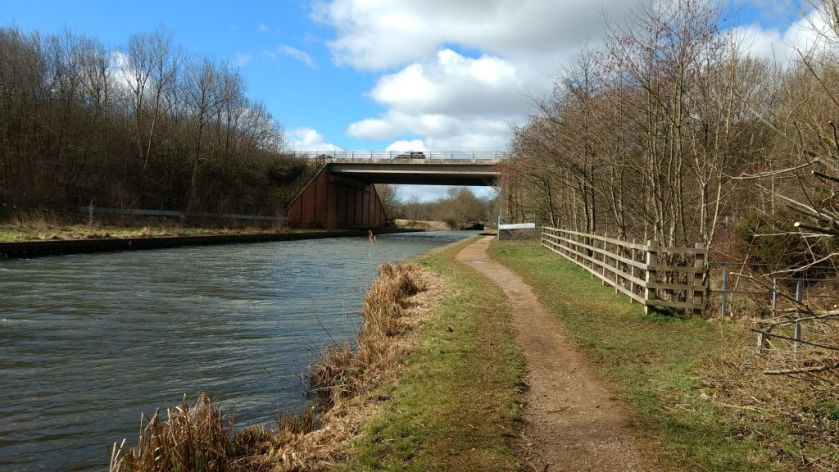
And when you get to the nature reserve there’s always somewhere to park…..
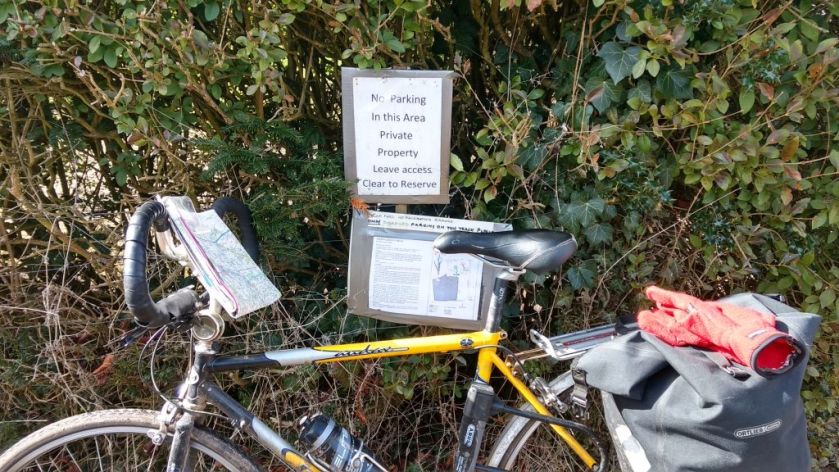
WARNING! to anyone considering taking their bike by train between Reading and Newbury. The line is being electrified so there is a bus replacement service ‘on various weekdays throughout 2018’. Buses don’t take non-folding bikes. Told you it wasn’t easy.
The sandwich problem
Under the heading ‘Why ready-made sandwiches are bad for the climate’ an article in New Scientist has given me pause for thought. It appears that scientists at Manchester University have studied how much greenhouse gas is released from 40 different types of sandwich. The good news is that home-made sandwiches come out better than shop-bought ones. The bad news is that even the least harmful sandwich they studied, ham and cheese, generated 620 grams of carbon dioxide equivalent, THE SAME AS DRIVING A CAR FOR 8 KILOMETRES. That’s FIVE MILES!
Well, I reckon I could make a sandwich which is less harmful than that, by cutting out the meat (the ingredient with the biggest impact apparently) but, even so, it’s disturbing when sandwiches and car travel are compared. For anyone who wants more details the work is in Sustainable Production and Consumption, doi.org/cjt5
Postscript – I’ve just (sort of) read the article and it’s fascinating. Really. BUT it appears that the only home-made sandwich they tested was ham and cheese, but 16 variations of it…..two slices ham, one slice cheese; thick bread, thin bread….etc etc. If anyone has got the time and energy to read this amazing article properly and can give me advice on what home-made sandwich has the smallest carbon footprint equivalent to the smallest number of CAR MILES….please let me know 🙂
More info about the Green Challenge: https://sue6665.wordpress.com/about
To support the challenge and donate to BBOWT: https://www.justgiving.com/fundraising/susan-rowe2
To join BBOWT: http://www.bbowt.org.uk/how-you-can-help/join-us


